What I need right now is more fear. Not the kind of fear in which we are currently mired. Not the fear of leaving the house, standing too close to others, or touching our faces. Not the fear provoked by an unpredictable president who seeks to divide us and spread fear and hate. Not the fear that climate change will eventually make the planet uninhabitable for us and millions of other species. No, what I need is the heart pounding, adrenaline pumping fear that forces you to forget about everything outside of the moment.
Visceral fear is finite. It takes over completely for a few, heartstopping moments or hours, but it ends in relief, elation, and a sense of accomplishment. It can come from climbing a steep, sketchy slope, hearing a rattlesnake’s rattle, gliding over the last glassy tongue before plunging into frothing white water, sitting down to take an exam, or trying something you’re not sure you can accomplish. For me, this kind of fear is typically part of an outdoor experience, although I got a good dose of it during the NREMT exam. I associate it with beautiful places, sharing trail or river miles with friends, and learning and growing as a person. Here are a few times I’ve experienced the kind of visceral fear that planted me wholly in the moment:
Mas Profundo
We emerged from the greenery at the edge of a cavernous pit and gathered at the rim. The 5 of us looked into the gaping abyss below. The fact that we could see all the way to the bottom made it worse. It was appallingly far. Sotano de las Huahuas is over 700 feet deep, 300 some odd feet deeper than the cave we’d descended the previous day. Scott and Jerry, the two seasoned cavers on the trip, took one look in and set about pulling on their gear and rigging the ropes. Josh, Ben, and I just sat down, our faces frozen in shock, and wrestled with the decision we would have to make. After a few minutes, I said “NO WAY!” Josh and Ben echoed the sentiment. As I sat, a loop of “nowaynowaynowaynowaynoway” cycled through my mind. It continued as I numbly removed each piece of gear from my pack and inspected it meticulously before securing it to my harness. Soon, a whir of wings drew our attention back to the cave. A swirling cloud of white collared swifts poured from the entrance. There were so many that it was 30 minutes before the last of them left the cave. Somewhere in the middle of their balletic exit the “no way” in my head shifted to “maybe.” I still wasn’t sure I wanted to go, and I definitely didn’t want to be the first one down, so I watched as Ben clipped into the safety line. He approached the edge, threaded his rappel rack, tested it, and swung himself over the edge. With utter concentration he took a deep breath, unclipped from the safety line, and slowly started descending. After watching Scott perform the same sequence I was as ready as I was going to be. I sat on the edge, legs dangling over 700 feet of air, and tried to keep my hands from shaking as I rigged my rack. With my heart pounding in my ears I inched forward, sliding off the ledge and into space. As soon as I weighted the rope, my descender holding me in place, the fear evaporated. I felt like a leaf floating from the top of a tree as I descended into the cavernous depths.
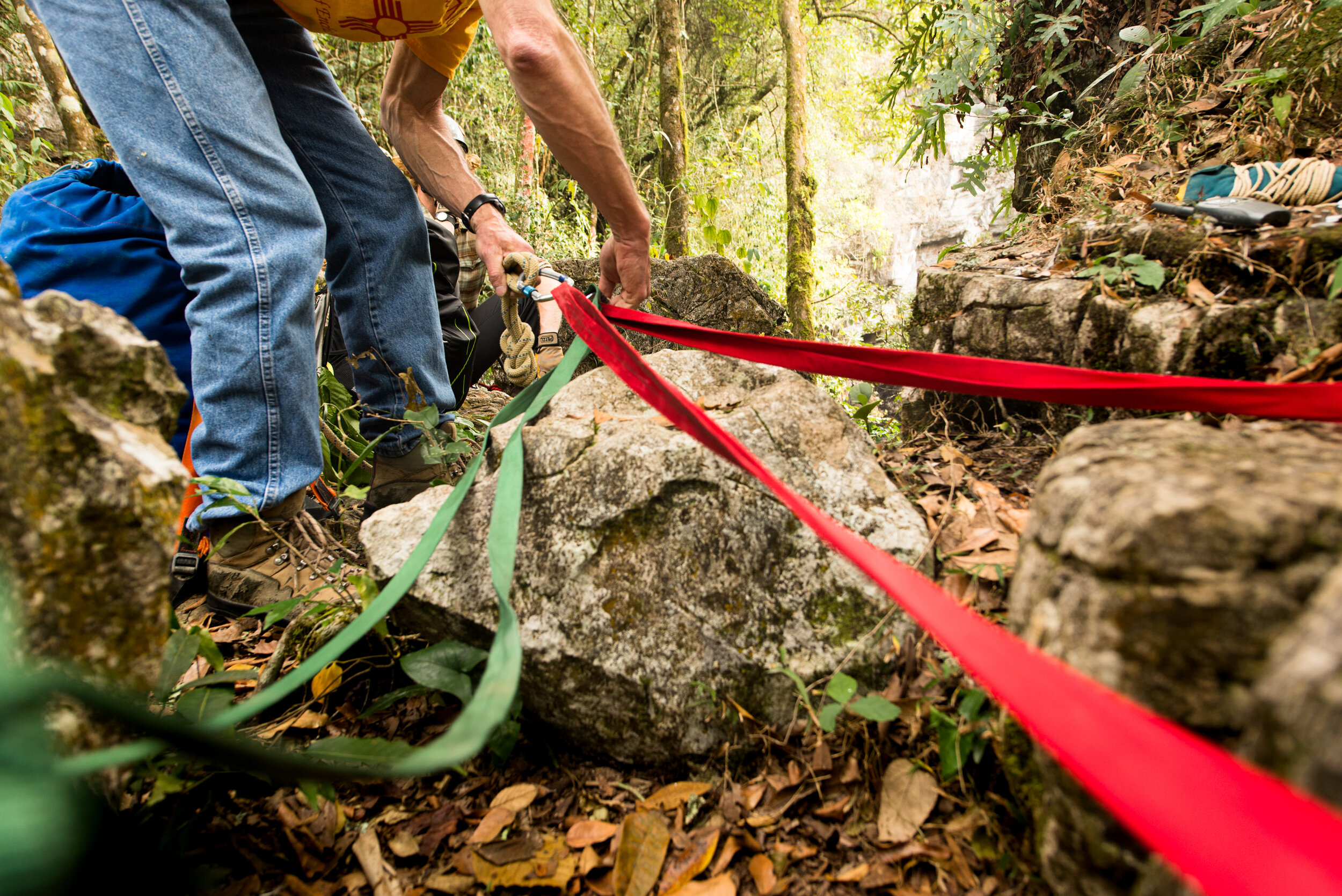
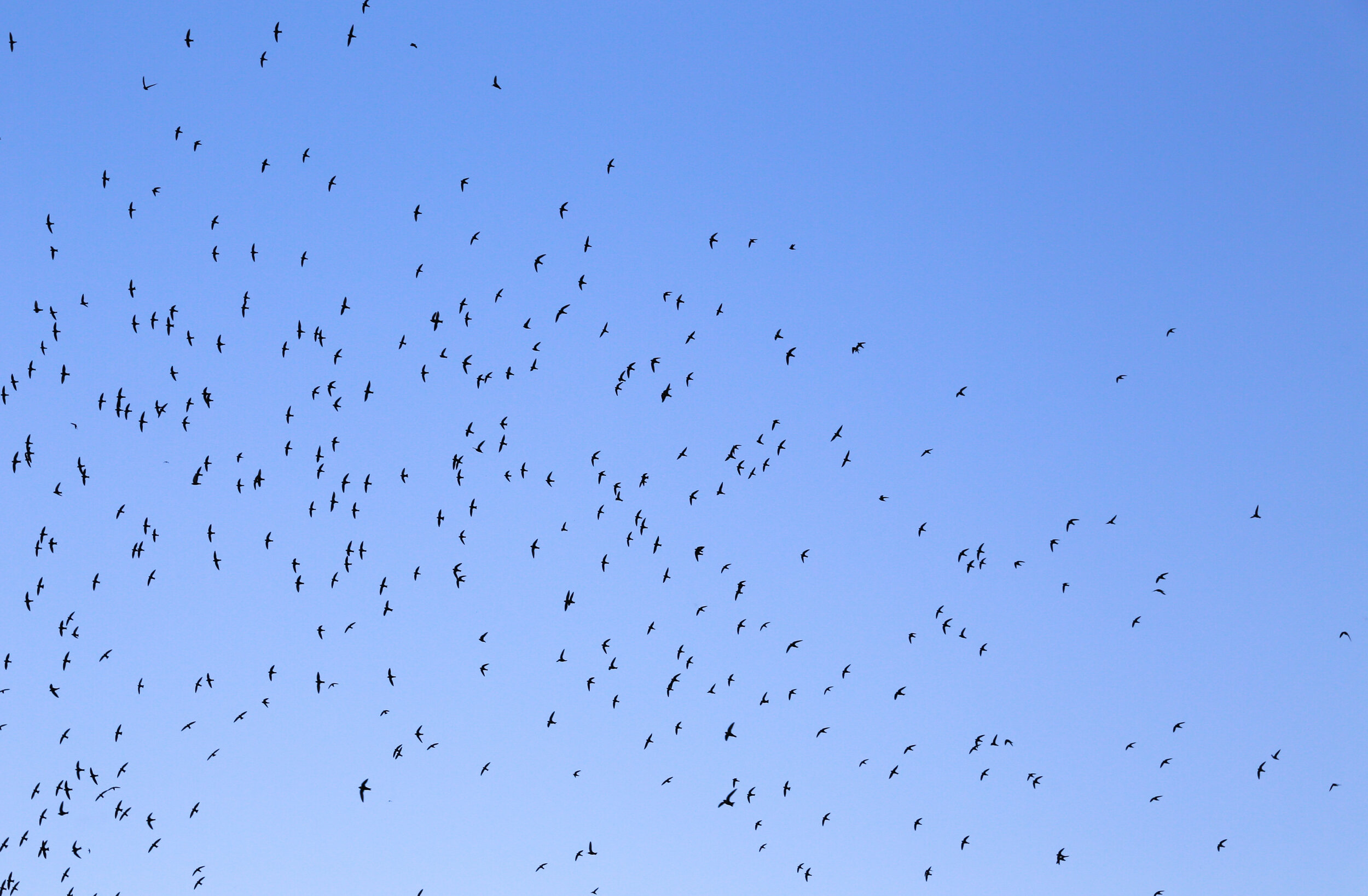
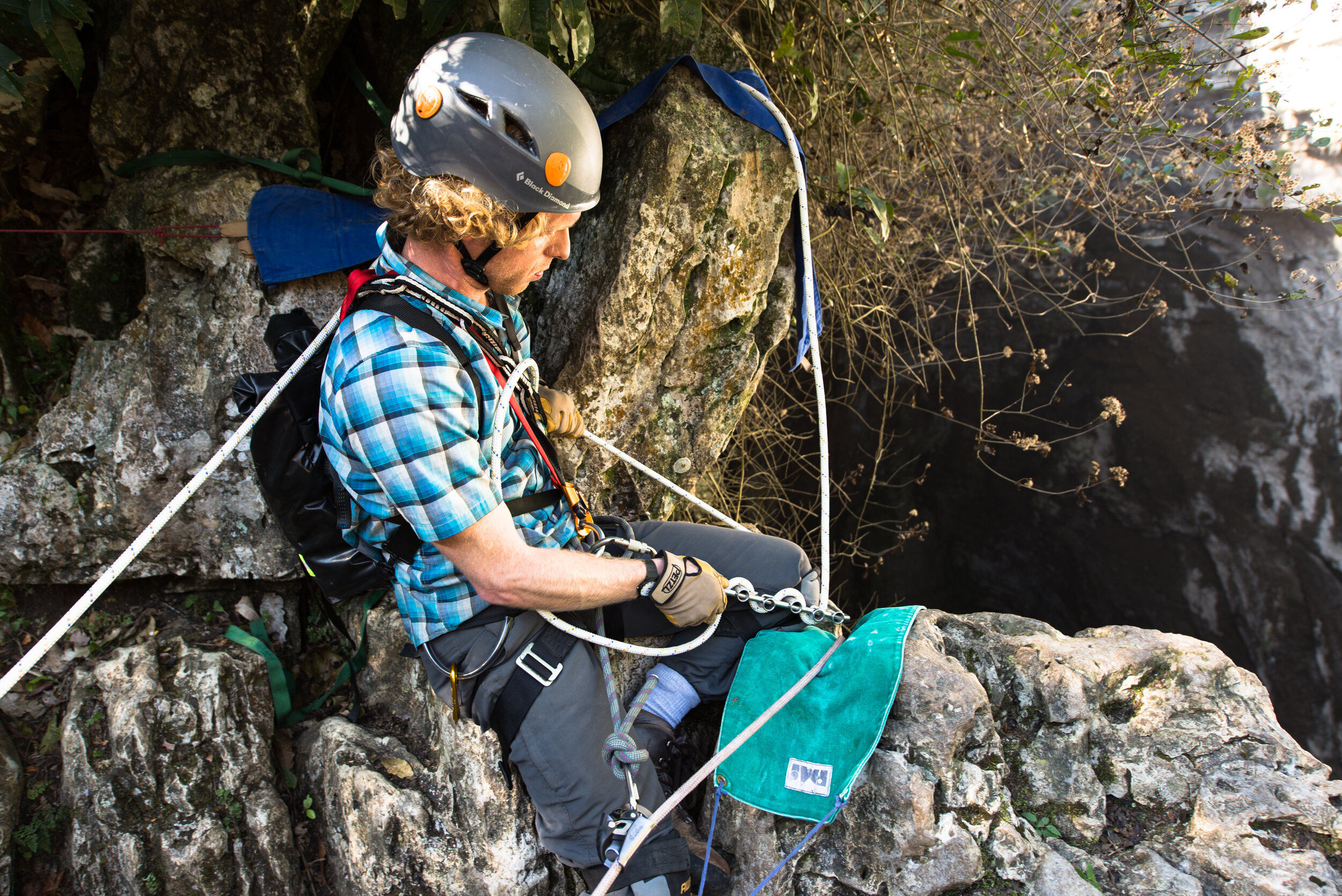


The Red Slide
“That was fucked up” were the first words I said to Darrin after climbing the short cliff band. We were attempting to complete the Cove Canyon route from the Colorado River in a day. We thought the canyon itself would present the biggest challenge. There was no telling when anyone had descended it last, and we might have to build anchors for all 15 rappels. But here we were, less than halfway to the top of the approach climb, and nearly 2 hours had already passed. Todd Martin only devotes a few sentences to the Red Slide Route in his book, “Grand Canyoneering,” so we didn’t give it much thought when planning the trip. It rapidly became clear, however, that the route was going to require our full attention. We set off from camp in the dark and thrashed through brush to the start of the climb. We slowly plodded up the steep slope, loose rocks cascading behind us with each step. The cone of debris got steeper and steeper, requiring one or both hands most of the time, until we reached the top. We looked around for the route. Were we too far left? Maybe we should traverse the top of this chute? Then Darrin spotted it. A cairn at the top of a 15 foot face of vertical limestone marked the way forward. We climbed up one at a time, hoisting our packs with webbing to avoid climbing with them, and sincerely hoped we wouldn’t encounter any more cliffs. The terrain above relented a bit. We walked up a drainage with big, stable boulders, until we hit the next cliff band. I worked my way up, testing each hold before weighting the crumbling rock. Darrin studied the route from below, unsure that it was the right way. There was really only one other option, but it didn’t involve climbing so I backtracked and we gave it a try. 30 minutes later we were cliffed out with nowhere to go but back the way we came. We had a snack and regrouped before backtracking and trying the cliff face again. I climbed back to where I had been when we turned around, then made a short traverse to a limestone slab and found the next cairn. We continued scrambling upward following more frequent cairns until we arrived at a 20 foot chute. Stemming to the top was the most secure climbing of the whole day, since falling only meant landing on the debris pile at the bottom, rather than tumbling hundreds of feet down the loose scree. The slope above was just short of vertical, and the loosest we’d encountered yet. With four points of contact we pulled ourselves at last to a ridge thousands of feet above the river. We caught our breath and collected ourselves. The worst was over. From the ridge we caught an old miner’s trail that led to the Esplanade where we found the Tuckup Trail. Relative to the Red Slide Route, Cove Canyon felt safe and easy. We found all of the rappels recently rigged, which saved us hours, though we still completed the last few in the dark.
It was a huge relief to finally descend into the narrows of Cove Canyon.
Hang On!
Lava Falls is the biggest rapid in the Grand Canyon, which puts it in contention for largest in North America. Its roar can be heard from quite a distance, but boatmen can feel it in the back of their minds from the moment they put in at Lees Ferry. With each river mile that passes beneath the boats, its roar grows imperceptibly louder. The day before Lava, it is all anyone can hear. On our 2018 river trip, the day before Lava was a layover day. Darrin and I were toiling away on the Red Slide Route, but everyone else in camp spent their day trying not to think too much about the Ledge Hole, the V Wave, and the Big Kahuna Wave. Finally it was time to put in. We floated the tranquil water, thinking we could hear the roar around every bend in the river. When we finally saw Thor’s Anvil, the huge basalt boulder jutting from the river that marks the approach to Lava Falls, there was a simultaneous sense of relief and anxiety. From the scouting beach we climbed a boulder strewn slope to get a good view. I followed Gary to the top and as soon as the rapid was in view we both laughed out loud. The frothing mess below was way bigger than anything we’d navigated upstream. The line through Lava starts by setting up with the right tube of the raft on a line of bubbles that well up mysteriously from the river bottom. It leads the raft into the curling wave on the far right side of the Ledge Hole. When the entry is correctly executed, the curler should set a boat up to punch through the center of the V Wave and ride the waves that follow safely. From our vantage point we could see the bubble line and visualized where we needed to be. With Darrin at the oars and I in the front, we looked for the bubble line. What we found instead, as we would soon learn, was an eddy line created by a large boulder on river right. We entered the curling wave too far right. It spun us so we were presenting our broad side to the churning V Wave. Darrin swung the boat backwards as I tried to pivot to help him steer as we collided with the massive wave. I felt myself sliding toward the foaming water as the oars were ripped from Darrin’s hands. I grasped the slippery pad that I was sitting on, but it provided no purchase, and I continued to slide. I felt one of the oar handles hit my back, then the boat tipped the other way, depositing me back in my seat. I whipped around and held tight to a strap, while guiding Darrin the best I could over the Big Kahuna Wave and through the tail waves. We eddied out to watch the rest of our crew make it through to safety. Our whoops of joy echoed from the canyon walls and the roar that had been present in the backs of all of our minds suddenly disappeared.

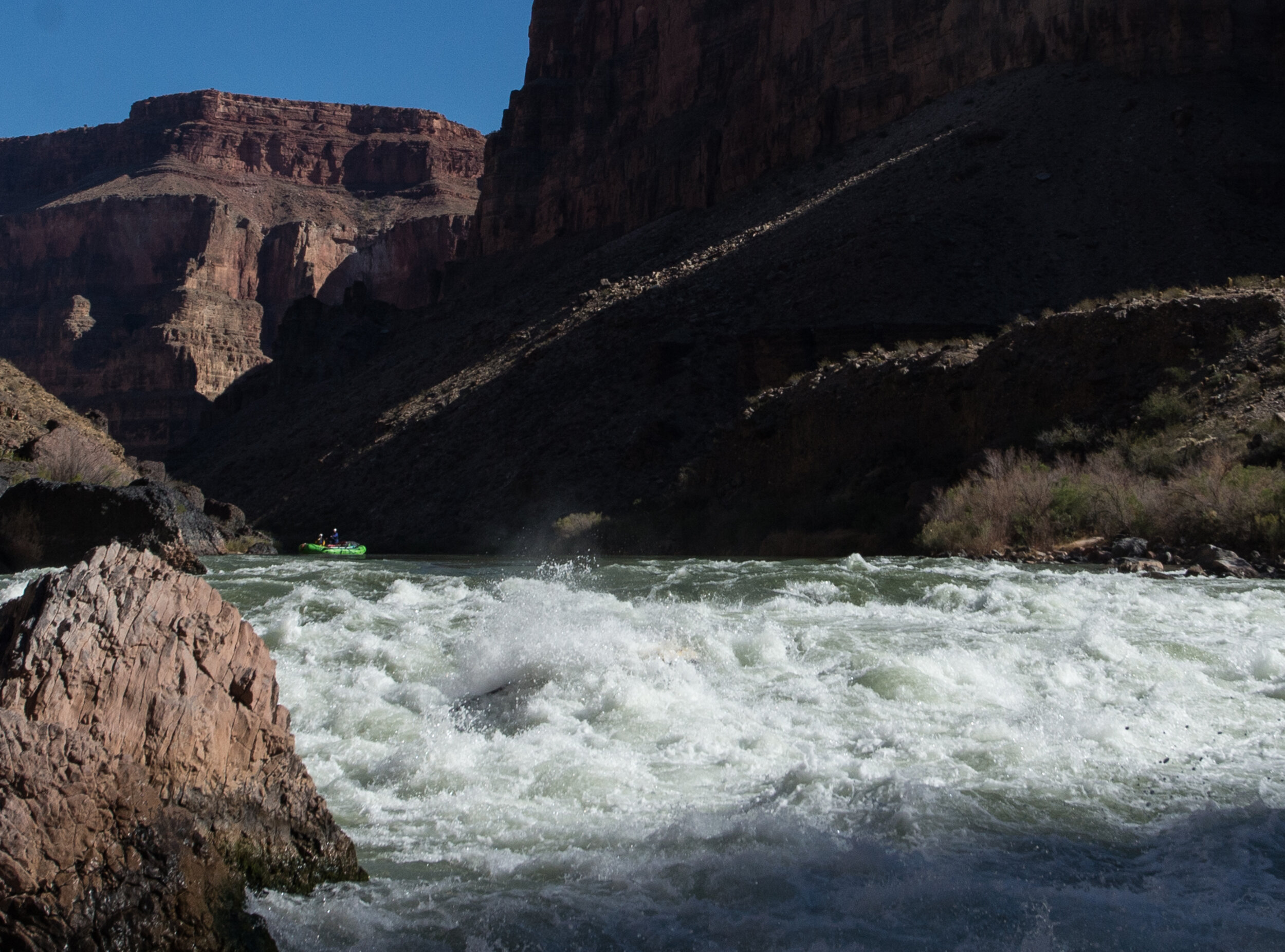
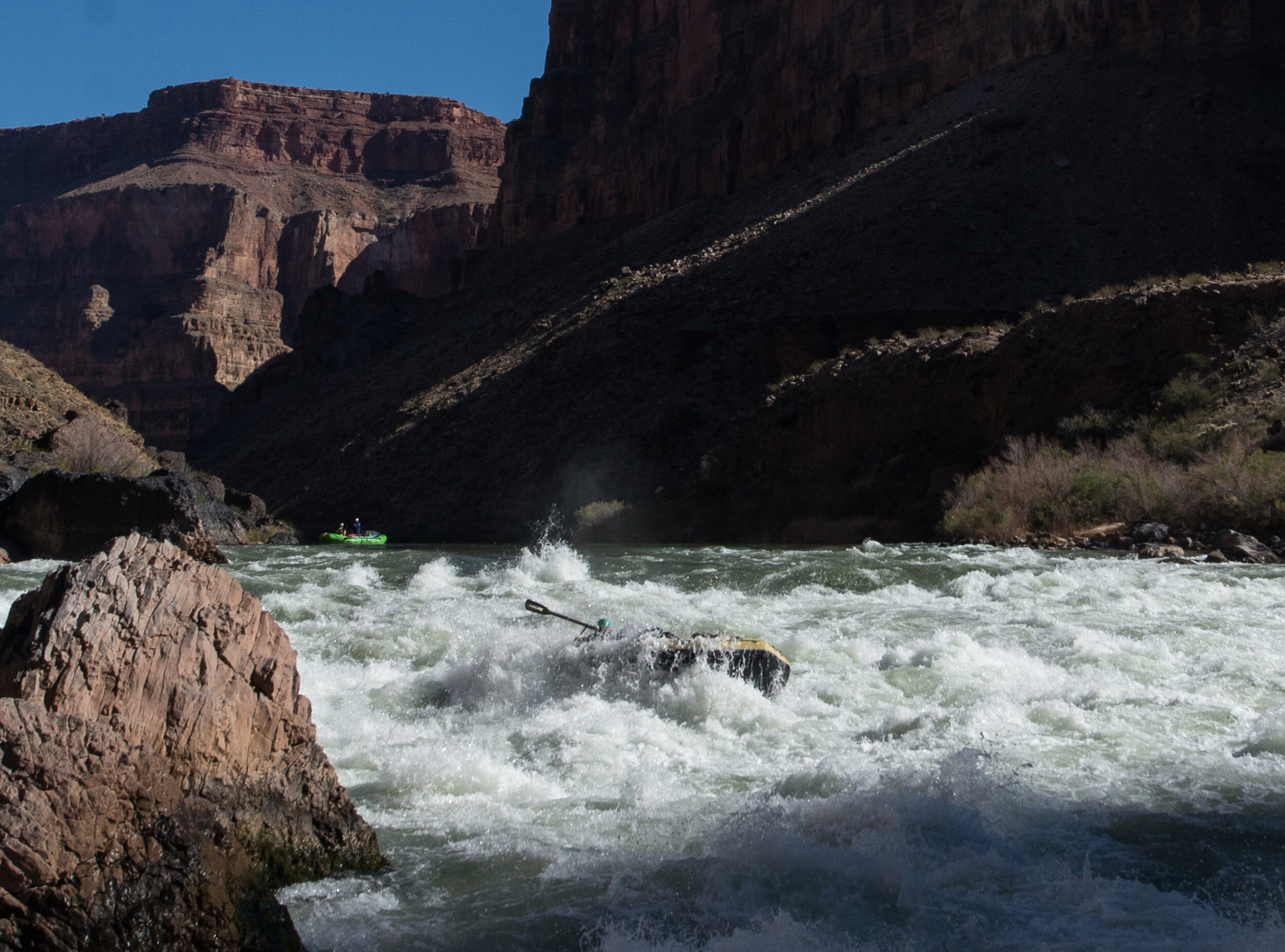


In this time of social distancing and self quarantine I’m steeped in the other kind of fear. It isn’t as gripping or consuming, but it is almost always present. The uncertainty of when it might end is the most difficult part. Already the start of the season at Grand Canyon has been delayed twice; first to the end of April, now to the end of May. My partner, Ceili, is with her parents halfway across the country. We were supposed to be traveling together to the Canyon as I write this, but now we can only wait. One of my pandemic projects has been cleaning out my photo library. In the process I’ve rediscovered images that remind me of times when I felt the kind of fear that made me forget about everything else. I know in the future I will experience it again, but for now I will have to settle for memories.




